CLOSE TO HOME
Between January and May 1942, 82 American vessels hauling badly needed war supplies were sunk by German submarines, often close to the U.S. coast -- including 6 off Georgia and Florida. Killed were hundreds of merchant seamen, civilians who didn't get veteran status until 1988. This is the story of the Georgians who solved the mystery of the SS Oklahoma and its unnamed dead.
by Bill Hendrick
The Atlanta-Journal Constitution, February 14, 1999
[Courtesy of The Atlanta-Journal Constitution http://www.accessatlanta.com/ajc/]
St. Simons Island, Georgia
As never-ending waves splash softly over St. Simons' thin white beach, Don Robertson, 76, zips up his windbreaker, peers toward the dark sea and remembers how it feels to be "out there," on a lightly-armed munitions ship, a floating bomb, knowing that at any second, "you can just go 'poof' --- right up in smoke."The ex-merchant mariner came awfully close, in the middle of the Atlantic Ocean one night in 1942. His ship, the SS Susana - its holds crammed with explosives - was torpedoed by a German U-boat, and went down "like a funeral pyre," he says. "I was petrified. Just terrified."
He pauses, gesturing toward the horizon: "I guess they were, too."
They were the 38 men of the SS Oklahoma, an oil tanker that was torpedoed by German U-boat 123 just off the coast of this resort island in the wee hours of April 8, 1942. Nineteen merchant mariners were killed.
Four of them, who were burned beyond recognition and buried in Brunswick's Palmetto Cemetery in graves marked "Unknown seamen ---1942," have just been identified. Robertson's chapter of the Propeller Club of the United States has just matched names to the men and is raising funds to honor them with proper gravestones, a monument and a marker in downtown Brunswick honoring all merchant seamen. The club hopes to unveil at least the monument by National Maritime Day on May 22.
"That's something," he marvels to Michael P. Higgins, who spearheaded the club's dogged, yearlong investigation. "Imagine. After all these years. So many died, and [the merchant marine] never got the recognition we deserved."
Higgins has identified the four as Osswald Ryder, 21, of Ville Platte, La.; Joseph Geary, 37, of Boston; Alfredo Carmona, 46, of Puerto Rico; and Arthur Genter, 42, of Evansville, Ind. But he is still far from satisfied. Now Higgins is trying to find any living relatives who "might take comfort in knowing their sons, husbands or brothers" received a decent burial and didn't just vanish into the deep.
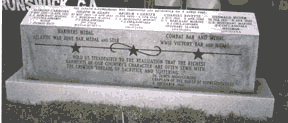
Tombstone dedicated Maritime Day, May 22, 1999 Inspired by his father's World War II heroism and newscaster Tom Brokaw's book, "The Greatest Generation," Higgins has become intent on "righting the wrongs" dealt to merchant sailors during the fighting and after."So is Robertson, who was only 19 when his ship went down. "We got shortchanged," he declares, "like some of the Vietnam veterans. Unlike the others, we weren't eligible for veterans' benefits, the GI Bill, even a flag to cover our coffins or a plot in a national cemetery. We weren't seen as real sailors."
Merchant mariners were civilians, employed by companies hired by the government to haul badly needed war supplies: oil, gasoline, guns, food. Those who weren't too old to be drafted, or classified as physically unfit, were exempt from the draft only while sailing.
Though they were relatively few in number, the merchant mariners faced the worst odds, says Higgins --- one out of every 32 who served died, compared with one in every 34 Marines or one in 48 GIs --- and they are considered by many experts to be a prime reason the Allies won the war.
But it wasn't until 1988 that Congress granted the merchant seamen of WWII --- more than 10 percent of whom were African-Americans, serving on integrated crews --- the status of military veterans. And then it applied only to those who sailed between Dec. 7, 1941, and Dec. 15, 1945. Last Veterans Day, President Clinton signed a measure extending the cutoff date to Dec. 31, 1946, the same as that for those in the armed services.
Higgins, an intense, 47-year-old former merchant seaman with two college degrees and his own maritime business, says he was inspired, and a little angered, by all the hoopla last year surrounding the D-Day movie "Saving Private Ryan." The film didn't point out that hundreds of merchant ships were there too, under fire, hauling Allied supplies and men."
We were in Vietnam, Korea, the Persian Gulf, and nobody said anything," Higgins says. "But TV never interviews mariners."
Identifying and honoring the SS Oklahoma's four unknown sailors, says U.S. Rep. Jack Kingston (R-Ga.), who represents coastal Georgia in Congress, is at least a step in the right direction. "Though it's a small gesture in comparison to their sacrifice," he says, "we are hopeful that the loved ones they left behind and the family members they never lived to meet are soon shown this appreciation from a grateful nation."
Torpedo damage to SS Esso Baton RougeThe SS Oklahoma was one of two merchant vessels that were sunk on the morning of April 8, even though they were hugging the St. Simons coast. The other was the Esso Baton Rouge. Both went down in shallow water, their bows sticking out of the sea. Soon after the blasts that sank them, several Coast Guard vessels and a boat owned by Coca-Cola magnate Charles Candler, steered by his yacht captain, rushed out to rescue any survivors.
The wreck of the SS OklahomaThey found 19 from the Oklahoma, but couldn't reach that ship's dead. Thirty-eight of the Baton Rouge's 41-man crew took to lifeboats, and its three dead were accounted for. The ships were raised and towed to a spot near the King and Prince Hotel, and the bodies removed, on April 20.
"It was something," says Edwin Fendig, 71, now a harbor pilot and Propeller Club member. "I had a rowboat and took people out to the ships. The holes were gigantic. I went right through."
Adds Jack Lang, 70, a Coca-Cola retiree who was rocked out of bed in nearby Brunswick when the Oklahoma was struck: "It was like a sonic boom. It took several days for the oil to wash ashore, and the whole place was awash in rumors."
The unknowns were buried on April 26 in a funeral service conducted by two clergymen.
SS Oklahoma in pre-war colors with Texas Company insigniaUnmuddying the waters
Actually there were five of them, not four, and this initially muddied the waters for Higgins.In 1978, Lozamae Dietzler of Eau Claire, Wis., tried to find out what happened to her brother Charles Rivette, who had been classified as missing and presumed dead since 1942. She called the Coast Guard to see if it had ever updated his files. It hadn't. Dietzler gave up until she heard about a man named Terrence Logan, who ran a veterans' program at the University of Minnesota and reportedly could cut through red tape. Logan agreed to help her, says Dietzler, but he ran into "nothing but stone walls."
Finally, Logan thought to call the Glynn County coroner's office, because he knew the ship had been sunk off St. Simons. Someone there vaguely recalled that five unidentified men from the Oklahoma had been buried.
So Logan simply put two and two together: Rivette had been on the ship; he was never seen again after April 8; so he must lie under one of the burial plaques. In 1979, Logan had the American Legion place a marble marker bearing Rivette's name among the five small plaques.
"It was a great relief," says Dietzler, now 78. "It made me feel better to know he'd been buried on land."
But Rivette's marker only made Higgins more determined to find out the names of the other four. His obsessive search was like following a seed trail to nowhere, through a minefield of answering machines with endless options and bureaucrats with no answers.
Finally, Higgins lucked onto Bill Chubb, a retired Coast Guard commander and now an executive of its National Maritime Center, who soon became just as determined to solve the mystery. Three weeks ago, after navigating through a maze of warehouses and old records, Chubb found what he was looking for: enough evidence to identify the unknowns, including Rivette. He came across the ship's roster, the list of survivors and known dead, and separate files on each seaman. The folders contained personal information and photographs --- but no hint that the Coast Guard was ever told that the five had been recovered.
"It suggests that recovering the bodies must have taken a while," Chubb says. "With so many merchant ships being sunk and so many mariners lost, word of the weeks-later recovery of these bodies may simply have been lost in the confusion."
A government cover-up?
Higgins contends that the government was so deeply involved in stemming panic along the coast that it lost sight of the needs of individual families.The blasts of the St. Simons sinkings rocked islanders and residents of nearby Brunswick, shattering glass, wrote Michael Gannon in "Operation Drumbeat," as far inland as 18 miles. The sinkings not only brought the seemingly distant war close to home; they helped wake up coastal communities, and President Franklin D. Roosevelt, to the immediacy of the German threat during America's darkest days of World War II.
A few months earlier, the U.S. fleet had been decimated at Pearl Harbor. Headlines were telling of Americans fighting against hopeless odds at Corregidor and Bataan. The public wasn't told much about the coastal battle, and the official word, issued daily, was a lie: "Sighted sub, sunk same."
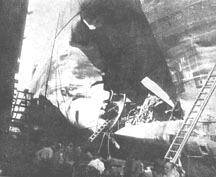

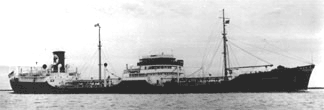

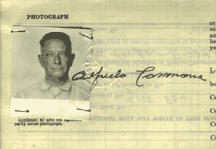
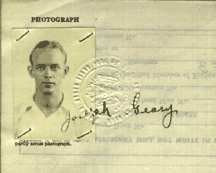
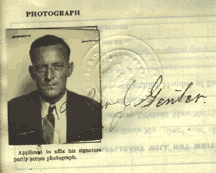
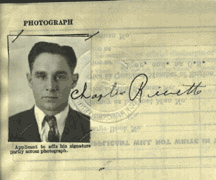
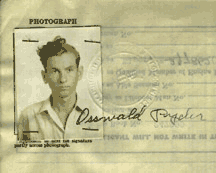
 St.
Simons Island, Georgia
St.
Simons Island, Georgia